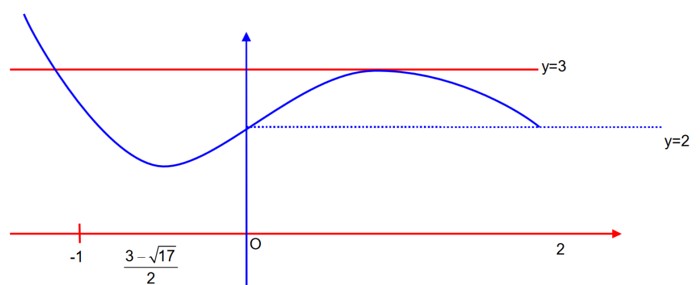Let f : R -> R be a function defined by f(x) =
Then which of the following is NOT true?
Let f : R -> R be a function defined by f(x) = Then which of the following is NOT true?
Option 1 -
For n1 = 3, n2 = 4, there exists where f attains local maxima.
Option 2 -
For n1 = 4, n2 = 3, there exists where f attains local minima.
Option 3 -
For n1 = 3, n2 = 5, there exists where f attains local maxima.
Option 4 -
For n1 = 4, n2 = 6, there exists where f attains local maxima.
-
1 Answer
-
Correct Option - 3
Detailed Solution:option (C) is incorrect, there will be minima.
Similar Questions for you

absolute minimum
absolute maximum = 3
If f(x) has maximum value at x = 1 then
……..(i)
……..(ii)
From (i) and (ii) we get
OP2 = x2 = y2
y = ex, y’ = ex,
slope of normal =
By hit and trial we get
c = -5, a = 2, b = 1
CD = √ (10+x²)² – (10–x²)² = 2√10|x|
Area
= 1/2 × CD × AB = 1/2 × 2√10|x| (20–2x²)
=> 10 – x² = 2x
3x² = 10
x = k
3k² = 10
Taking an Exam? Selecting a College?
Get authentic answers from experts, students and alumni that you won't find anywhere else
Sign Up on ShikshaOn Shiksha, get access to
- 66k Colleges
- 1.2k Exams
- 680k Reviews
- 1800k Answers
